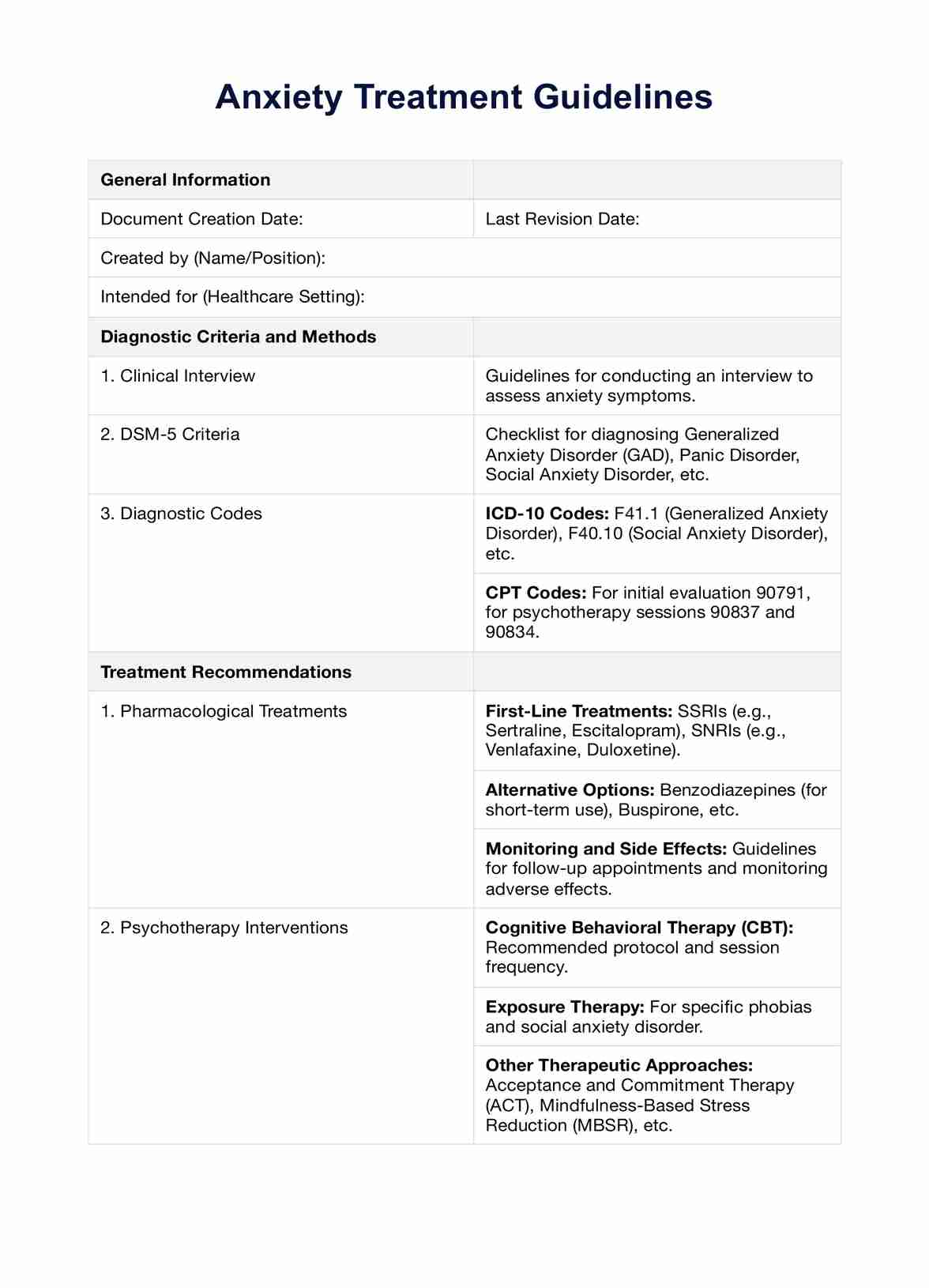Normal anxiety is a feeling of nervousness or worry that everyone experiences from time to time, usually as a reaction to stress, not an illness anxiety disorder, and it typically resolves on its own. An anxiety disorder, however, involves more intense and persistent fear or worry that interferes with daily activities and persists for an extended period. Unlike normal anxiety, anxiety disorders require professional treatment to manage symptoms effectively.

Disruptive Mood Dysregulation Disorder Treatment Plan
Unlock efficient anxiety care with Carepatron's software, featuring patient management tools, secure communication, and streamlined billing.
Disruptive Mood Dysregulation Disorder Treatment Plan Template
Commonly asked questions
While anxiety disorders may not be "cured" in the traditional sense, they can be effectively managed with the right treatment plan. Many individuals with anxiety disorders can achieve substantial relief from their symptoms through a combination of medication, psychotherapy, and lifestyle changes. Treatment aims to reduce symptoms, allowing individuals to lead a fulfilling and productive life.
The time it takes for anxiety treatment to begin showing effects can vary depending on the type of treatment and the individual. Medications like SSRIs and SNRIs may take several weeks to start reducing anxiety symptoms. Psychotherapy, such as cognitive-behavioral therapy, can take several sessions before individuals notice significant changes. Patients need to maintain open communication with their healthcare provider to adjust treatment plans as needed for the best results.
EHR and practice management software
Get started for free
*No credit card required
Free
$0/usd
Unlimited clients
Telehealth
1GB of storage
Client portal text
Automated billing and online payments











